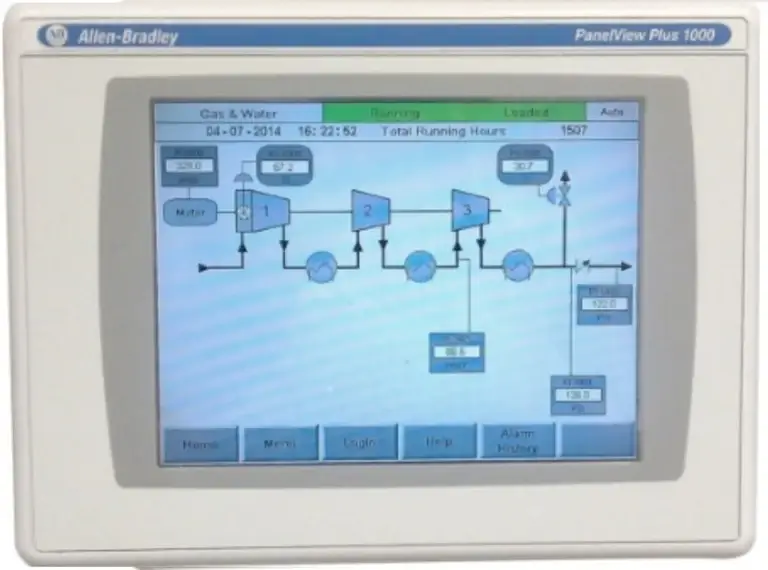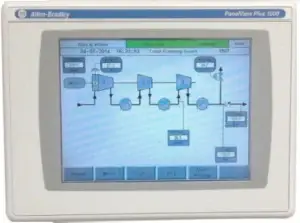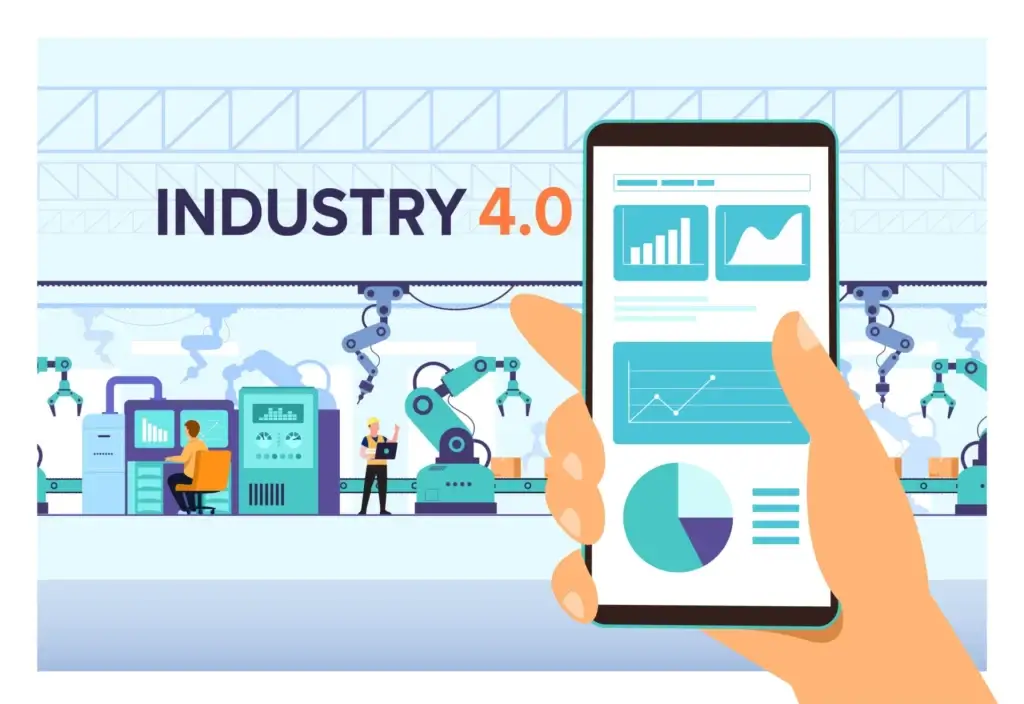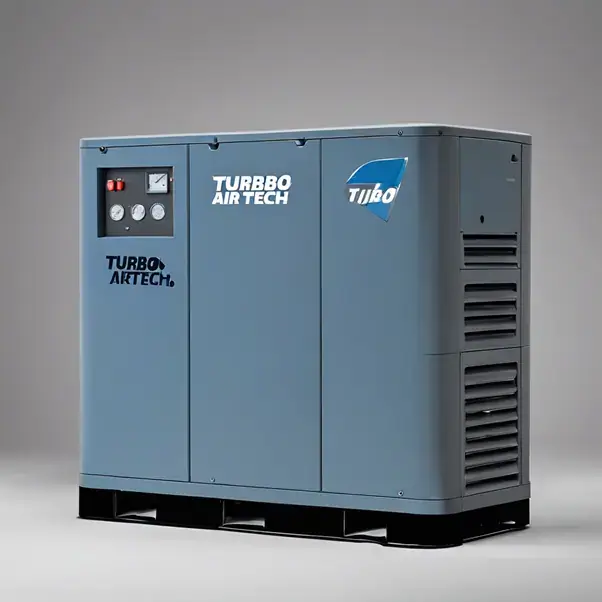
Air Compressor monitoring system

Picking the air compressor monitoring system that is right for you
Choosing the right air compressor monitoring system is crucial for optimizing performance and enhancing operational efficiency. There are primarily two types of systems available: cloud-based and local area network (LAN) systems. A cloud-based system,offers the convenience of monitoring your compressor from anywhere, using just a smartphone or tablet.
On the other hand, a LAN-based system connects directly to a central controller and provides detailed technical visualization of compressor data. This system is particularly beneficial in optimizing efficiency, especially during periods of high energy costs. It not only allows for monitoring but also sends alerts regarding potential issues, enabling proactive maintenance. Another option is to integrate your compressor with your facility’s SCADA system, which facilitates communication and data sharing across platforms.
When selecting a monitoring system, consider the specific needs of your operation, including the size of your facility, the complexity of your air compressor setup, and your budget. A well-chosen monitoring system will not only enhance the reliability of your compressed air system but also lead to significant cost savings through improved efficiency.
Air Compressor monitoring system & control Schematic
Depending upon the types of compressors & compressor room there can be different types of control & remote monitoring system that can be used for compressed air equipment, including but not limited to auto dual or dual control, modulation or inlet valve modulation, constant speed, timer based, variable displacement etc.
Compressed Air (Pneumatic air system) is an essential tool that is used in a variety of industries. Some of these industries include the oil industry, the chemical processing plants, the pharmaceutical industry, and heavy industries.
It is critical that these compressors operate at a high level of efficiency without any breakdowns, which is why a reliable and efficient control system is required. Air compressors are controlled with a variety of control philosophies, including compressor speed control, valve control etc.
Modern air compressor’s control panel controllers are highly advanced systems with high processing power, advanced connectivity options due to the need to control compressed air systems which are complex in nature with highly complex monitor and control schemes for smart factories. This system may have a range of compressors in one system, making it impossible to use the simplest control available. Nevertheless, with the advancement in the compressor control system market, controlling such system has never been easier.
Compressed Air Controller: uses and benefits
Control systems for compressed air systems are crucial for ensuring their stable operation & energy efficiency. In addition to ensuring the safety of the compressor system, they are also essential for ensuring the safety of the operators.
Automation can make machines more efficient and durable. Production benefits from a stable air demand & system pressure.
Sensors and electrical components make up the control system. These components can all be controlled from one central point. The versatility and functionality of controllers have been enhanced by improvements in sensor technology and microprocessors.
Computerized control systems are more common in large compressors. They can perform several automatic functions.
1. Starting and stopping the system safely
The operator performs preliminary preparations and checks during start-up. The valves are checked, auxiliary equipment is checked, and if necessary, purging is done. All stabilizers such as lubricants and coolants must be in good shape for the compressor to run smoothly. A compressor and all its auxiliaries are monitored by sensors.
As it warms up, the compressor runs at a low speed while being carefully monitored. Gradually, the speed increases until the ramp speed is reached, which is the speed at which compression is the minimum. When the compressor reaches full speed, it performs at its peak. Likewise, shutting down requires a lot of work.
As its inlet supply is gradually reduced, the compressor slowly slows down. As the deceleration continues, the inlet supply is totally shut off. After a while, the compressor completely stops.
The compressor controls vary the speed of the compressor during these two processes. This ensures a safe and successful start-up and shutdown. Often, intelligent control systems can seamlessly implement these tasks by themselves or with little assistance from a human.
2. Provide information about the system (Compressor, dryer etc.)
Sensor information can be used to determine status of your compressed air system in real time. A low oil level, for instance, could indicate an oil leak. Insufficient lubrication or worn parts may cause high temperatures. Among the most important sensors are:
Pressure sensors
Temperature sensors
Vibration sensors
Level sensors
Flow sensors
Overload sensors
Compressor control systems include sensor systems on auxiliary components. These sensors monitor environmental conditions outside the compressor. This information is essential to the compressor’s operation. It is important to note that every compressor is rated for a specific working condition.
Compressor efficiency can be reduced if certain variables are off from the optimum level. This results in a shorter life cycle of the compressor and more energy consumption. Using collected data on centralized dashboard, it is possible for the compressor’s parts to be observed for their wear rate using remote compressor connection using Modbus, Profibus, Canbus, ethernet or similar protocols. This can be used to prepare maintenance procedures and schedules.
3. Motor Control (Driver Control)
Electric motors are usually used to drive compressors. They are efficient, clean, and produce high torque. Motor controls are, however, required for electric motors to monitor the motor current. With motor controls, the motor is protected, and its operational variables are controlled. Pilot devices typically control motors. They are made up of switches and indicators. This allows the operator to operate the motor.
Devices such as these are typically used as part of a control system, automated process, or a control panel to provide automated alerts and information on the condition and control monitoring of different types of processes, machinery, and equipment.
A push button controls the closure and reopening of contacts manually. The contact blocks of these devices are either normally closed, normally open, or a combination of both.
Pilot lights – These devices give visual feedback about the status of a circuit. Their primary purpose is to indicate ON/OFF, changing conditions, and alarm signaling.
Short circuits, surges, overloads, and surge protection are all provided by circuit breakers.
MCBs are used to handling currents below 100 amps.
Relays are controlled switches that respond to external signals. High-power circuits are controlled by relays.
Monitoring and adjusting the power output of the motor is done with intelligent devices. Motor variables such as torque and speed are automatically adjusted to match the load. As a result, there is low power consumption, low noise, low vibration, and little radiant heat. PLCs are used for automating these processes.
A Human-Machine Interface (HMI) provides communication between the motor and control devices and the operator. HMI stands for human-machine interface. Intelligent motor controls allow the operator to interact with the motor. The power and speed of the compressor are controlled by the driver. The speed can be varied with some compressors. Compression is most effective within this range.
It is possible to vary the pressure or gas output in such a case by altering the speed of the driver. Positive displacement rotary compressors have a direct correlation between the rotation speed of the input shaft and the displacement of the compressor.
Variations in the speed of the driver affect the compressor’s output. If the compressor output must fluctuate frequently, this feature is useful. A VSD compressor, i.e. rotary screw compressor with variable speed drive, is used as one of the popular compressor capacity control methods in the industry. Reduced drive speed, however, decreases compressor efficiency. It is necessary to change other variables along with the drive speed.
This maintains efficiency within reasonable bounds. Driver output can be adjusted by the air compressor control system. In addition, the motor’s load and temperature are adjusted to ensure that it does not become overloaded or overheated. For efficient operation, the motor controller balances the torque, power, and speed outputs of the motor.
4. Maintain stable compressor operation with energy efficiency
reliability of your compressed air refers to the RPM, gas input, and output being optimal and stable, which increases reliability. Choke and surge are two of the most common undesirable conditions experienced by centrifugal compressor controls.
When they occur, the compressor becomes unstable. During a surge, the input gas supply is below its optimal level. The drive motor becomes overloaded. During this process, the compressor seeks to pull in more gas while pushing out more.
As a result, output fluctuates, power usage is irregular, and vibration and noise are increased. Many compressors automatically offload when their inlet capacity drops below 40%.Occasionally, the reduced gas intake cannot be matched by adjusting the driver’s speed. In such cases, the surge control must stabilize the compressor.
Most compressors are equipped with surge control. An automatic valve controls this gas route. It links the inlet system with the output system. Whenever a drop in gas supply is noted, the valve connecting the outlet pipe to the inlet pipe is opened.
As part of the process of increasing the input volume, some of the output gas is injected into the inlet. The valve closes once normal gas flow is restored from the original gas source. Operations returned to normal. By reversing the flow, the problem of surges is solved.
However, the overall compressor throughput and downstream flowrate is decreased as well. The opposite of surge is choking. It is caused by a very high input flow rate at the input of a compressor operating at a low discharge pressure. As a result of choking, the compressor’s performance is drastically reduced.
Pressure and flow cannot be delivered at optimal levels by the compressor. Inlet controls automatically restrict the system by closing a portion of the inlet valve. If gas is compressed or accelerated at the inlet, this limits the capacity and efficiency. In such a case, choke controls can divert excess gas into low-pressure buffer storage so that the gas does not reach the inlet.
5. Manage Process Variables Using Automation
Controlling the requirements of the compressor is the responsibility of the compressor control system. A lot more goes into executing and adhering to the commands than what appears to be a simple matter of flipping switches or interacting with an HMI. Compressor output must meet expectations.
It is the controller’s responsibility to ensure this is always the case. The control system can modulate the inlet valve in addition to adjusting the drive speed to control the flow rate and displacement of a compressor. Gas intake is throttled by modulating the intake valve to maintain a certain pressure.
When the incoming gas capacity decreases, the pressure and amount of gas at the output also decreases. The compressor draws a vacuum at the inlet if the inlet supply is cut off at full speed. This may result in motor overload and overheating. Using the modulating controls, the motor controls are adjusted to prevent this. The inlet pressure is reduced as well. Compressors operate with a partial load most of the time. Because of this, displacement can be adjusted without engaging the driver controls.
6. Auto-shutdown in unsafe conditions
Compressors have low fault tolerance for the majority of their components, and maintaining the compressor’s health is crucial. Sensors monitor the status of key components. It is possible to prevent damage if anything goes wrong by taking drastic measures in advance.
An automatic shutdown can be initiated by compressor control systems. It usually occurs when a vital component fails or if unsafe working conditions exist. Uncontrolled surges and chokes, or overloads of the electrical systems, are hazardous conditions.
The compressor is stopped if the air compressor control panel senses any abnormality in the normal running conditions, closing the inlet valve. Blow off valves open to release compressor discharge pressure.
7. Multiple compressor controls in compressed air system
Controls are linked together to form Profinet network controls in industries that need more than one compressor. One compressor assumes the role of the master and the others take on the functions of subordinates.
The whole system is controlled by a master controller rather than individual compressor controls to control full load & part load operations. Data and commands are shared among sophisticated networked controls.
The entire system is controlled by one central processor acting as master control, employing various control strategies depending on the type of compressor (Lubricant-injected rotary screw compressor, reciprocating air compressor etc.). Performance and output variables are maintained as desired in tight pressure bands, thus controlling pressure drops due to leaks.

Multiple compressor control system
Optimize Pressure Utilizing Compressor Control
Compressor variables are controlled by air compressor control systems. By keeping them in good working order, the compressor will perform at its best. The purpose of these components is to ensure efficiency, energy savings, increased system performance and safety.
There are various types of compressor. They are available in a wide range of models, sizes, and performance levels. They are all, however, incomplete without dependable controls. We at Turbo Airtech do more than just work with OEM control panels. We also design and manufacture essential control systems with PLCs and Scada for real-time monitoring.
As manufacturing capacity increases, compressed air capacity needs to be expanded in order to support the increased demand. You can achieve this by upgrading the existing system to provide additional air capacity or by installing a separate system. The power consumption of an air compressor can be high even when it is idle. Additionally, old compressors can be inefficient. Because of this, they use more power.
The importance of central controllers
Central controllers play a pivotal role in managing multiple compressors within an industrial setting. Rather than operating each compressor independently, a central controller streamlines operations by overseeing the entire compressed air system. This integration is crucial for optimizing efficiency and ensuring that each compressor operates at its most effective performance level. For instance, central controllers can adjust the air supply based on real-time demand, helping to reduce energy consumption and minimize costs.
With advanced features like the Atlas Copco Optimizer 4.0, these controllers can match air supply to current demand, preventing unnecessary wear on equipment and extending the lifespan of compressors. By maintaining stable pressure and efficiently distributing workload among compressors, central controllers mitigate the risk of production disruptions during maintenance. This seamless operation ensures that one compressor can be serviced while the others continue to function, thus maintaining operational continuity.
Additionally, central controllers provide valuable analytics to help identify inefficiencies and opportunities for improvement. They enhance the overall reliability of the compressed air system and empower operators to make informed decisions that can lead to further savings and performance enhancements, making them an essential component of modern industrial operations.
Compressed air monitoring system : Real-Time Access to your air compressor remotely
All businesses are affected by rising energy costs, tough economic times, and the need to reduce costs. These factors are driving increased interest in energy reduction measures and technologies.
Most industrial facilities are looking at ways to reduce their energy consumption by reducing their use of compressed air systems, a very expensive utility. A control and monitoring system enables you to not only keep a eye on your compressed air system but also setup maintenance reminders and alerts, keep a eye on parameter to decide when a maintenance is required.
Monitor the compressor run time parameters with real-time data, performance data, equipment maintenance schedules, oil change performance, interactive reminders… basically a 360° visibility around the clock on a cloud-based or a desktop computer configuration enabling you to diagnose potential issues and enhance reliability and efficiency. It helps you monitor, record and analyze :
The on/off period,
The load/unload period, i.e. the loading pattern,
the pressure using the pressure sensors,
The air flow (CFM) uses the flow meter.
The humidity
The power consumption.
Furthermore, operation and maintenance departments can perform preventive maintenance by monitoring these parameters and evaluating compressor performance through a control system and monitoring system. Compressed air monitoring equipment which includes
Air consumption monitoring using flow meters.
Compressed air sensor for temperature.
Compressed air quality monitoring using a dew point meter.
Compressed air pressure sensor for system pressure.
Air compressor sensor for Discharge Air.
Energy Meter for compressors.
Compressed air data logger.
Other compressed air system monitoring tools.
Application of Air Compressor Monitoring Solutions
These tools should be considered when you evaluate compressed air systems determining the efficiency and power consumption of air compressors:
An air compressor data logger with network capability (remote compressor monitoring) using high-speed wireless, cellular, Modbus, Canbus, Profibus, Ethernet data transmission that continuously logs and records air compressor parameters as well as taking multiple inputs for extensive data analysis.
Easy-to-use data logger software, displaying and displaying parameters as they are measured by the data logger in the form of graphs.
Integrated active power meter with the ability to measure power (kilowatt-hours and megawatt-hours), voltage, and current.
An air compressor temperature sensor measures the air compressor’s temperature value after each compression stage.
Each air compressor should be equipped with a pressure sensor that measures pressure per square inch.
Each compressed air system should have pressure sensors at the utility point to measure pressure drops and estimate leakage.
Dew Point Meter to measure the amount of water vapor within the air compressor.
Flow meter for Compressed air Consumption Monitoring.
Controller to manage air compressor air supply to the system.
Compressor on/off time to form a basis on compressor uptime w.r.t. air production.


